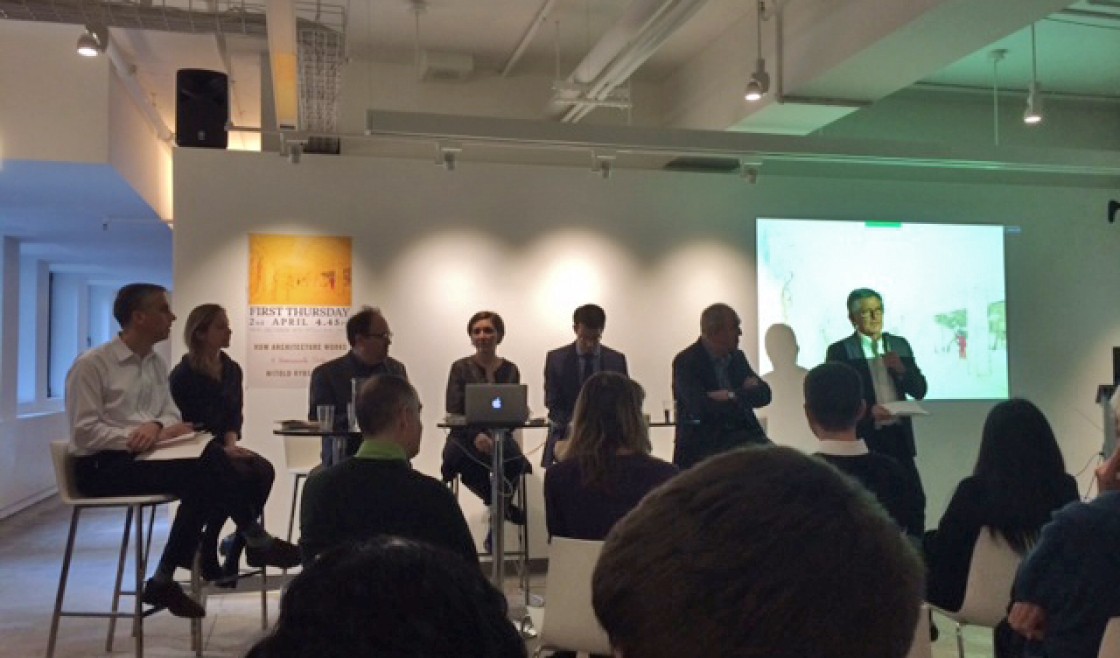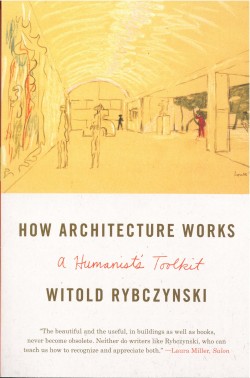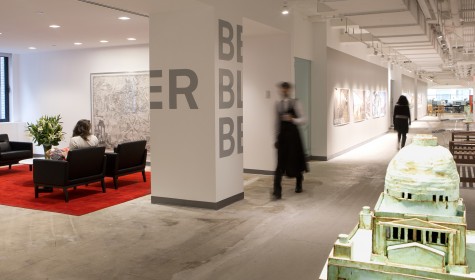BBB Hosts Author Witold Rybczynski

On April 2, BBB’s New York office hosted award-winning writer Witold Rybczynski in a panel discussion of his recent book, How Architecture Works: A Humanist’s Toolkit. As significant as Witold Rybczynski’s visit were the conversations that members of the BBB community had in the studio about the book, and in the days leading to and following the event many interesting ideas came to the fore. Here are some of the great questions posed that the panel did not have time to address. They are valuable as open-ended subjects for reflection.

Kevin Hanlon on Sustainability:
Do humanist architects have an obligation to conserve natural resources, reduce pollution, and design healthy environments?
Kevin Hanlon on Empiricism vs. Rationality:
The subchapter Quirks highlighted the value of human nature in design. Does your definition of a humanist architect emphasize empiricism (sense based and experimental) over attributes like reason and rationality, which often leave little room for fantasy, incongruity, and contradiction?

Caroline VanAcker on Women In Architecture:
The book highlights a number of architects and firms, yet there was a notable absence of women. Denise Scott Brown, Elizabeth Diller, and Ray Eames were mentioned, yet only in the context of their firms and the male partners were the ones giving the quotes. Maya Lin is really the only female designer who speaks for her own project. With the recent attention given to the “Missing 32%” of women in architecture, the push to award Scott Brown the Pritzker, and other similar movements outside of architecture, do you think this male-dominated narrative is starting to change? Are there women architects working right now (or in the past) whose work you think highlights the main topics in the book?
Caroline VanAcker on the Eisenhower Memorial Controversy:
What are your thoughts on the highly contentious Eisenhower memorial designed by Frank Gehry? There were objections and controversy to the site, the design, and the competition process itself, all elements discussed in the book. Are these disagreements just the signal of an involved populace with naturally differing opinions on design, or are they the sign that something is wrong with how this project was introduced?
To summarize the April 2nd event, the author began with a short presentation about the book, which was based on a freshman seminar and could be called a primer of architectural principles. Speaking about the cover image, a sketch by Louis Kahn of the Kimball Art Museum, he said that “architecture is the picture frame, not the picture.” He compared the perception of a building, which people experience as a silhouette, to that of a novel, in which one sees every detail of its construction. The contrast, he explained, is that the human experience within architecture is what infuses it with meaning.
The breadth touched upon by the book led to widely ranging questions from the panel, comprised of BBB’s Nate Rodgers, Miriam Kelly, Bob Stern, and Michael Wetstone. The discussion delved into a further exploration of humanism, choices made when designing additions to existing buildings, social responsibility, branding, and taste.
A few suggestive sound bites from Witold Rybczynski’s remarks:
“Style is really the wrong thing to focus on… Taste is ultimately much more important. It’s often unspoken.”
“Branding pushes architecture more toward a product, and products have short lives.”
“There is nothing about architecture that makes us sacred, we will become fusion driven like the rest of our culture.”
“The practice of architecture is one of the last crafts which is totally a one-off.”
“I like messiness, I’m skeptical of rules. I don’t think buildings are lessons.”
For an architect, reading Rybczynski’s book is in many ways like taking a stroll through familiar and, in my opinion, very dear topics. It was fun, for example, to revisit the broad ideas about detailing by reading about the wide range of strategies and symbols in the design of a stair railing taken by Robert A.M. Stern, Richard Meier, Steven Holl, Renzo Piano, Louis Kahn, Tadao Ando, Frank Gehry, Herzog and deMeuron, and Rem Koolhaas.
There are, however, two prominent themes in the book that I remember almost no discussion of during my days in school. The first, which is introduced in the subtitle, is humanism. Although Rybczynski does not explicitly define his intended humanist audience, he makes clear that his intention is to provide a conceptual framework, written in understandable terms, which never loses sight that architecture is above all the setting for everyday life. Jargon that we heard in theory classes is notably absent from the book: history and experience refreshingly trump phenomenology, dialectics, deconstructivism, and other similarly esoteric ideas.
The second theme that was was omitted (at least overtly) during my studies is that of taste. Although it is used conversationally throughout our culture, in architecture schools it is, if mentioned at all, typically used in superficial, often dismissive, references to fashion. Rybczynski devotes the entire final chapter to the subject, granting it the same attention and significance as the other fundamentals. In it, he explores the shifting definitions of the term through history; from Edith Wharton, who declared that good taste in architecture depends on its suitability and fulfilment of practical needs, to a Beaux-Arts emphasis on the primacy of aesthetics and the idea that taste is a response based in intuition and personal preference rather than intellect. It is this final point, Rybczynski puts forth, that accounts for modernism’s nearly wholesale dismissal of taste as a valid criteria for evaluating architecture. Nonetheless, despite “the current belief that intellectual theories are the foundation for design,” he suggests that the first year design exercises done in many schools, intended to sharpen visual and conceptual skills, are in fact inducting students into the language of the prevailing tastes of the day. He concludes with case studies of the homes of several contemporary architects, investigating how the personal preferences—tastes— of these designers shape the spaces that they live in.
For those of us working in the field, How Architecture Works is an interesting review of the tools that we carry with us. The humanist angle, however, sets it apart from a straightforward refresher course with its insistent validation of practical experience, accessible ideas, and intuition.

